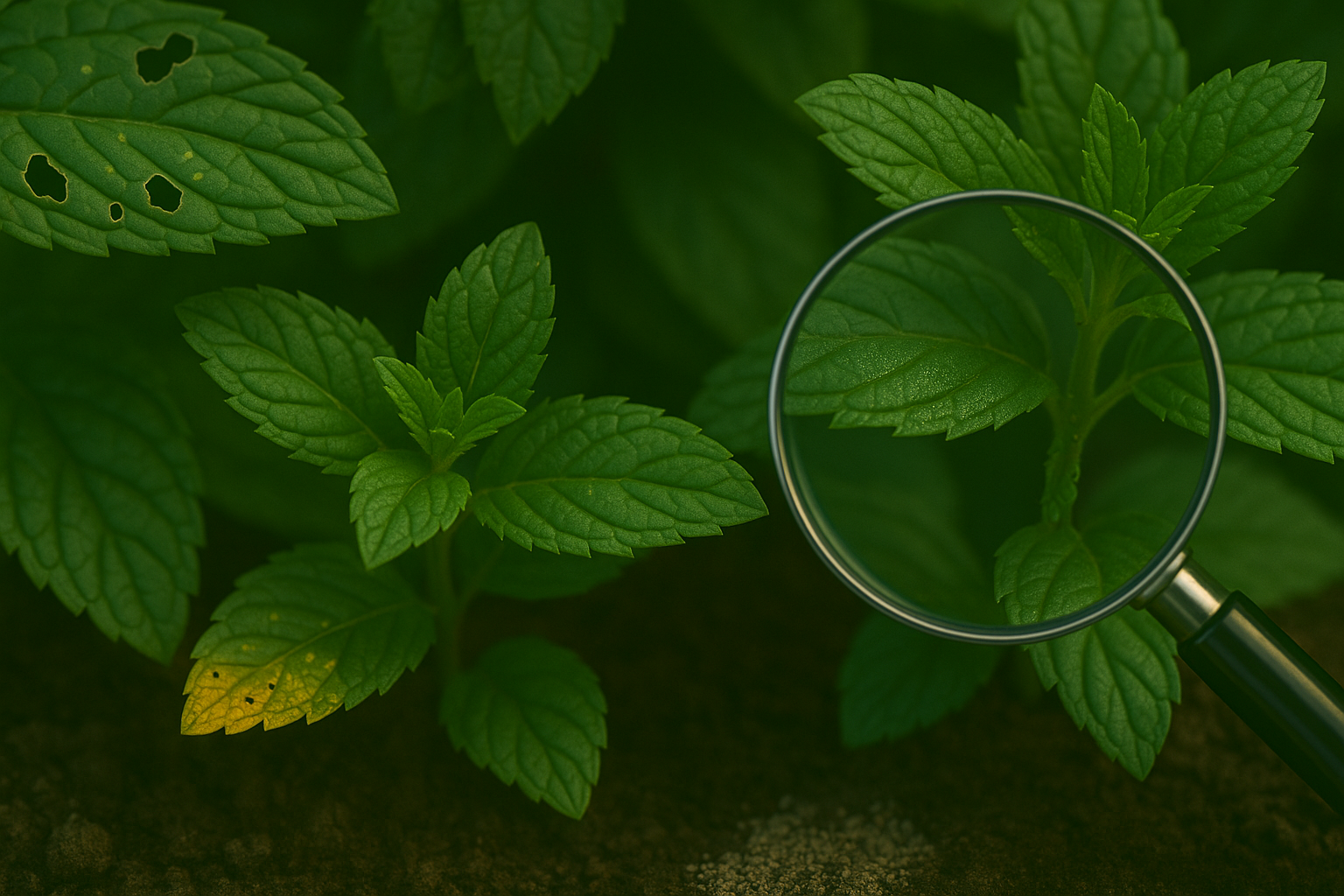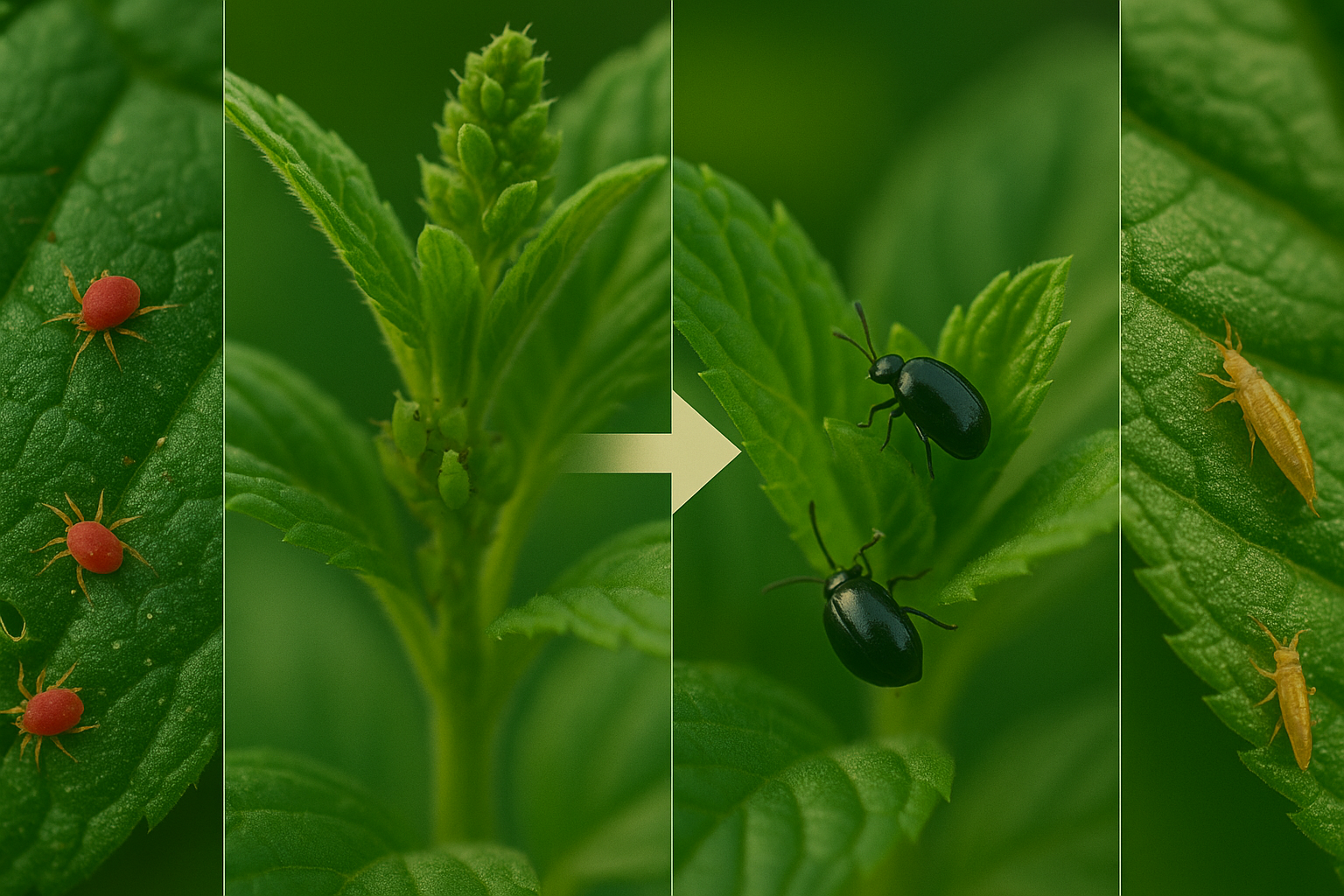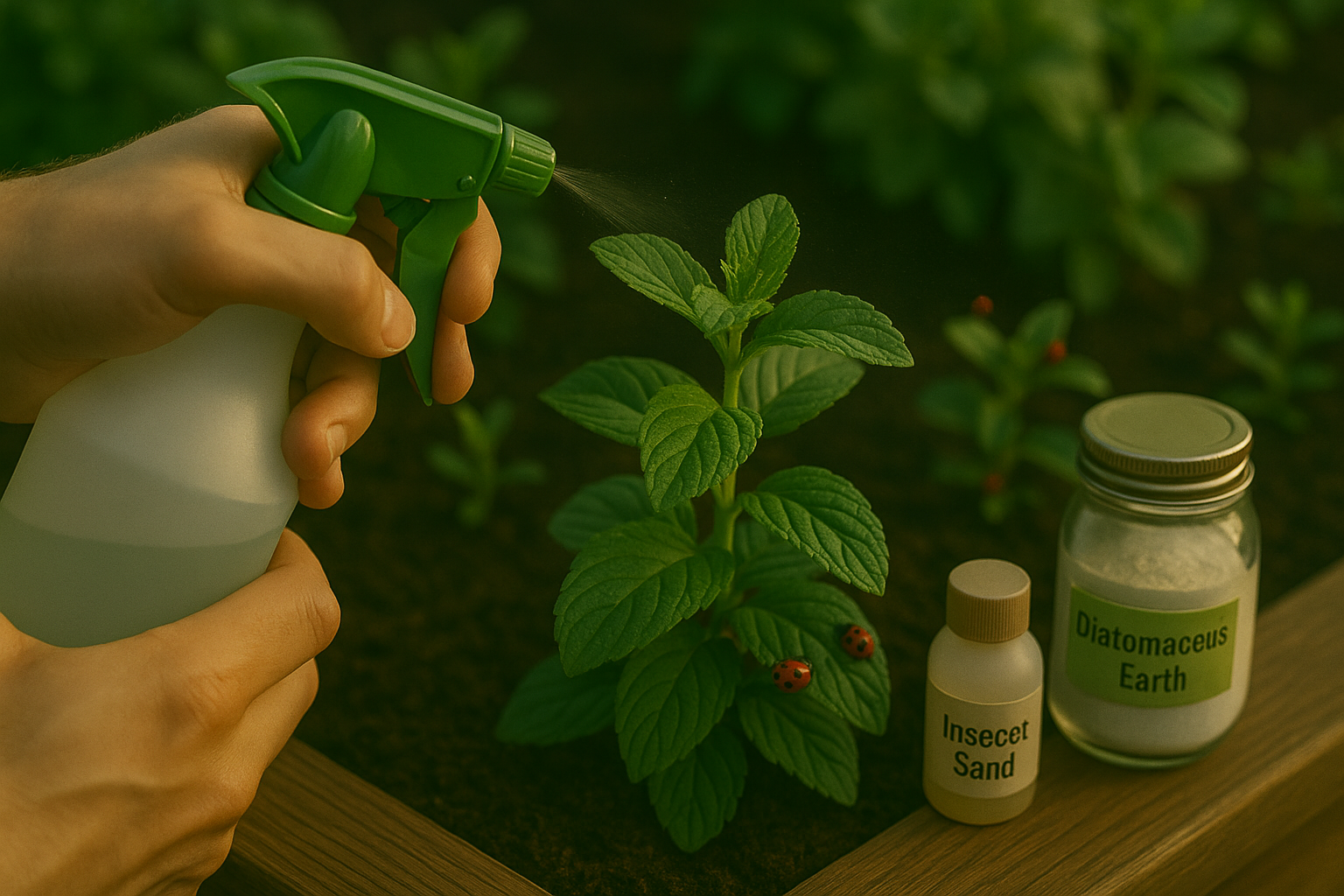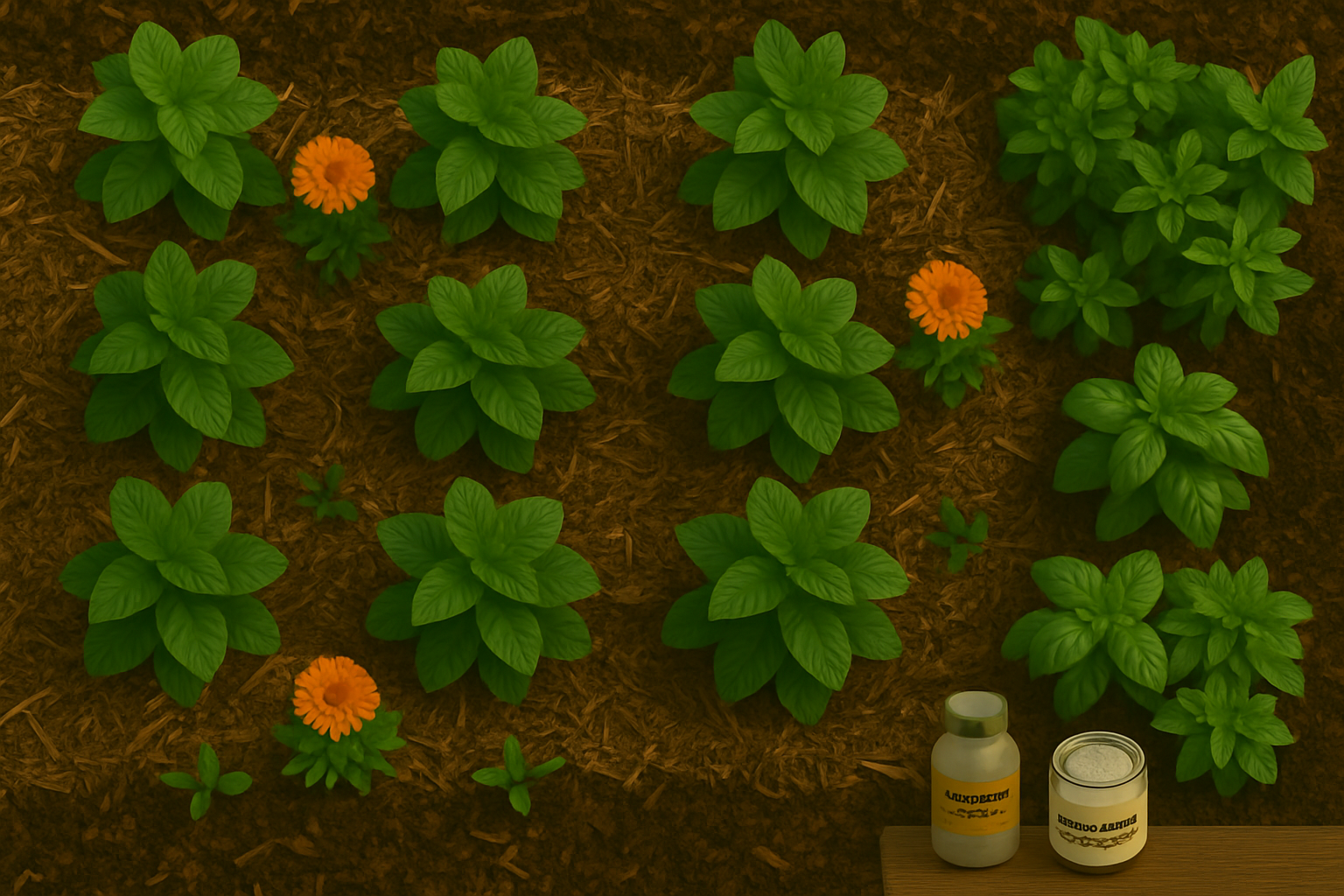Introduction
If you’re growing your own herbs, keeping an eye out for mint plant pests is essential to maintaining a healthy garden. Mint often attracts pests because of its fragrant leaves and rapid growth, creating an inviting environment for insects like aphids, spider mites, and flea beetles. Spotting problems early—before an infestation gets out of hand—can make all the difference.
Look for warning signs like yellow or curling leaves, tiny holes chewed through the foliage, and stunted growth. These subtle clues are usually the first indication that unwelcome guests are lurking. Ignoring these symptoms can quickly lead to a larger infestation, potentially wiping out your mint plants entirely.
In this guide, you’ll learn how to identify the most common mint plant pests, recognize the signs they leave behind, and discover effective, practical ways to treat and prevent further damage—so your mint can flourish all season long.
Common Signs Your Mint Plant Has Pests

Spotting pest problems on your mint plant is easier when you know what to look for. One of the most obvious signs is chewed or ragged leaves—tiny caterpillars, beetles, or slugs leave notches or holes, while disease or environmental stress usually cause spots or yellowing without missing leaf material.
Shiny, sticky residue on leaves often means sap-sucking pests like aphids or whiteflies are present; this “honeydew” can attract ants and even encourage sooty mold patches. Fine webs nestled in leaf joints signal spider mites, especially in hot, dry weather.
Sometimes you’ll see the pests themselves: clusters of small green or black bugs on new shoots, or small white flying insects when you disturb the plant.
Diseases, on the other hand, might cause powdery coatings, wilting, or root rot, but rarely chew holes. Environmental issues—like too much sun or water—usually cause leaves to droop, curl, or become discolored overall, not ragged.
For best results, inspect mint plants every few days, looking under leaves and along stems. Use a magnifying glass if needed, and check especially after rain or when you move plants indoors. Early detection is key to keeping your mint healthy and pest-free.
The Most Common Mint Pests & How to Identify Them

Mint is a hardy herb, but it’s not immune to pests—several tiny invaders can quickly ruin your plants if left unchecked.
Spider mites are some of the most common threats. They appear as tiny red or yellow dots under the leaves. You’ll often spot them by the fine webbing they weave and the speckled, yellowed patches they leave behind on the foliage.
Aphids are even easier to notice: these soft-bodied, pear-shaped bugs (usually green, black, or brown) cluster on new mint shoots, sucking sap and causing leaves to curl and yellow.
Caterpillars and loopers, like the mint looper, are hungry larvae that feast on mint leaves, leaving behind large, irregular holes and frass spotting.
Flea beetles are small, shiny black or bronze insects that jump when disturbed. They chew numerous round holes, creating a shot-hole pattern mostly on younger leaves.
Thrips are slender, tan to black insects that often hide along leaf veins; their feeding leaves silvery, streaked patches on foliage.
Cutworms, chunky brown or gray larvae, operate at night, often snipping young mint stems at the soil line, causing wilting or sudden dieback.
Most pests sneak onto mint from surrounding plants or weeds, especially if you garden densely, and some—like aphids and spider mites—can blow in on the wind. Others, such as cutworms, might overwinter in garden soil or compost and reemerge each spring.
To catch infestations early, inspect the undersides of leaves and the base of the stems regularly. Keeping your garden tidy, mulching carefully, and checking new plants before planting can all prevent unwanted guests from making your mint patch their next meal.
Natural and Chemical Treatment Options

When dealing with pests on your mint plants, starting with organic treatment methods is both safe and effective. Hand-picking visible insects early in the morning is a simple, chemical-free way to minimize pest problems, especially with larger bugs like caterpillars and beetles.
Neem oil is another popular organic solution—it disrupts insect growth and feeding while being safe for humans. Just remember to spray during the cooler hours to avoid harming your mint. Insecticidal soap works well against soft-bodied pests like aphids and spider mites; be sure to get thorough coverage of the leaves, especially the undersides.
Introducing beneficial insects, such as ladybugs or lacewings, can help reduce pest populations naturally and keep your mint healthy. Sprinkling diatomaceous earth on and around your plants is another gentle way to deter crawling insects, as the fine powder dehydrates them without affecting your mint’s growth or flavor.
If natural remedies don’t control the infestation, chemical pesticides can be considered. Always choose products labeled safe for edible plants and follow the instructions carefully. Use targeted applications rather than broad sprays, and avoid using chemicals on windy days to prevent drift onto other herbs and vegetables.
After any pesticide treatment, wait at least 7–14 days—check your product’s label—for safe harvesting. Be sure to thoroughly wash the leaves before use to ensure your mint is both tasty and safe to eat. Organic methods usually suffice, but if chemicals are necessary, careful timing and safe handling are key for protecting both your health and your harvest.
Preventing Mint Pest Problems

Preventing pest problems in your mint patch starts with a proactive approach that keeps plants healthy and less attractive to bugs. Companion planting is a natural, effective method—try growing mint alongside pest-repelling herbs like basil or nearby marigolds to deter unwanted visitors.
Proper spacing is just as crucial; crowded mint traps moisture and creates a cozy haven for pests, so always leave room for air to circulate between plants. Mulching with straw or shredded leaves helps keep soil moisture steady, blocks weeds, and discourages crawling insects from settling in.
Also, take a few minutes every week to clean up fallen leaves and debris from your garden beds, since decaying plant matter invites insects and disease. Inspect your mint regularly for early signs of trouble like curled leaves or sticky residue—catching problems early means you can remove affected parts by hand or use organic sprays before an infestation takes hold.
The best defense is a healthy, vibrant mint patch; water consistently, feed with balanced compost, and ensure good drainage. With these easy habits, you’ll grow mint that’s both aromatic and pest-resistant, giving you more to enjoy and fewer headaches throughout the season.
When to Seek Expert Help
If you’re facing a pest problem that just won’t go away despite your best DIY efforts, it might be time to call in the professionals. Severe infestations—like termites silently damaging your home’s structure, bed bugs spreading rapidly despite repeated treatments, or stubborn rodent invasions leaving droppings—require immediate attention beyond household remedies.
Persistent signs such as hollow-sounding wood, clusters of live or dead pests, and unexplained bites or allergic reactions are red flags. In these situations, reach out to your local extension office for guidance on safe and effective next steps in your area, or contact a licensed pest management expert who can identify the problem and use specialized treatments.
Remember, home remedies and store-bought sprays often provide only temporary relief and can miss hidden infestations. Acting quickly with professional help not only protects your property and health but often saves money in the long run by preventing major damage.
Conclusion & Quick Tips Recap
Staying vigilant and addressing mint pests early is key to keeping your plants healthy and thriving. Regularly check your mint for signs of trouble, like discolored leaves or tiny bugs. Properly identifying pests helps you choose the most effective and safest treatment methods—whether that’s removing affected leaves, using natural sprays, or introducing beneficial insects.
Remember, healthy plants resist pests better, so be sure to keep your mint well-watered and pruned. With these habits, you can enjoy lush, flavorful mint all season long. A little attention goes a long way toward growing pest-resistant mint with confidence and success.
